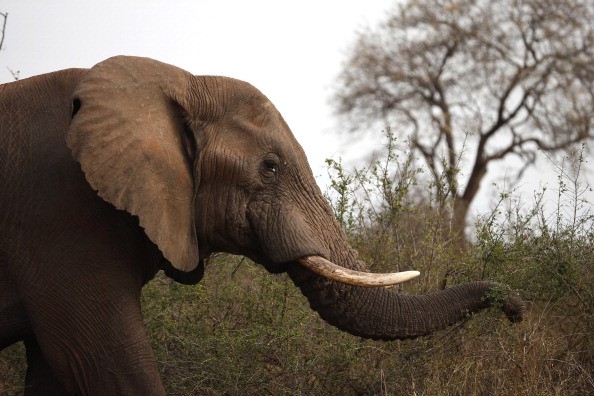Elephant Poaching Spikes To Alarming Rate Despite International Efforts To Control Ivory Trade
| KJ Belonio | | Jun 19, 2015 06:00 AM EDT |
(Photo : Getty Images/Dan Kitwood) Illegal wildlife industry such as elephant poaching is considered as one of the most treacherous forms of corruption and criminality worldwide. Despite international efforts to control ivory trade, elephant poaching is still occurring at an alarming rate.
Over the past years, industry for legal ivory has quadrupled and is providing a mask for illegal trade. And the mindless addiction for alleged cures and trinkets from ivory has heightened the slaughter and poaching of elephants.
Illegal wildlife industry such as elephant poaching is considered as one of the most treacherous forms of corruption and criminality worldwide. Despite international efforts to control ivory trade, elephant poaching is still occurring at an alarming rate.
Like Us on Facebook
In 2014, over 20,000 elephants were killed for their tusks across Africa. While in China, the world's biggest ivory consumer, Jobs & Hire reported that the nation has killed 100,000 African elephants in the past three years.
Since 2010, the wholesale price of raw tusks has tripled while retail prices for finished ivory have exponentially increased, thus, leading to the decimating population of the elephants. But in a new study published in the journal Science on Thursday, recent data revealed that DNA mapping might succeed in helping save African elephants and the ecosystems in which they play a significant role.
In the study, scientists conducted genetic tests on 28 large ivory seizures, each weighing over half a ton and worth at least $1 million. According to NBC News, the results determined the geographic origin of the tusks from the two types of African elephant—the savanna elephant and the somewhat smaller forest elephant.
"We were very, very surprised to find that over the last decade almost all of these seizures came from just two places in Africa," University of Washington biologist and study co-author Samuel Wasser said.
Wasser, together with his university colleagues and a wildlife crime expert at INTERPOL, devised a map showing where various populations lived based on DNA traits from dung, hair and tissue samples from elephants across the continent. They extracted DNA from ivory seized by authorities between 1996 and 2014 and identified the location where elephants with matching DNA live, VOA News learned.
Also stated in the research, most seized savanna elephant tusks came from a region covering parts of southeastern Tanzania and northern Mozambique. While Mashable revealed that most forest elephant tusks came from a region covering parts of northeastern Gabon, northwestern Republic of Congo and southwestern Central African Republic.
Elephant poaching occurs in a number of areas in Africa. But with the latest information, there is a potential that law enforcement will focus within these hotspots, which will possibly make the control of the illegal ivory trade a less daunting, more tangible task.
The best way to stop elephant poaching is to stop the demand for ivory, scientists said. Because the continuing decrease in the population of the elephants has already caused major ecological, economic damage and has threatened national security in Africa.
And if elephant poaching continues, scientists said it could cause more serious problems, noting that elephants could be extinct within two decades.
©2015 Chinatopix All rights reserved. Do not reproduce without permission
EDITOR'S PICKS
-

Did the Trump administration just announce plans for a trade war with ‘hostile’ China and Russia?
-

US Senate passes Taiwan travel bill slammed by China
-

As Yan Sihong’s family grieves, here are other Chinese students who went missing abroad. Some have never been found
-

Beijing blasts Western critics who ‘smear China’ with the term sharp power
-

China Envoy Seeks to Defuse Tensions With U.S. as a Trade War Brews
-

Singapore's Deputy PM Provides Bitcoin Vote of Confidence Amid China's Blanket Bans
-

China warns investors over risks in overseas virtual currency trading
-

Chinese government most trustworthy: survey
-

Kashima Antlers On Course For Back-To-Back Titles
MOST POPULAR
LATEST NEWS
Zhou Yongkang: China's Former Security Chief Sentenced to Life in Prison

China's former Chief of the Ministry of Public Security, Zhou Yongkang, has been given a life sentence after he was found guilty of abusing his office, bribery and deliberately ... Full Article
TRENDING STORY

China Pork Prices Expected to Stabilize As The Supplies Recover

Elephone P9000 Smartphone is now on Sale on Amazon India

There's a Big Chance Cliffhangers Won't Still Be Resolved When Grey's Anatomy Season 13 Returns

Supreme Court Ruled on Samsung vs Apple Dispute for Patent Infringement

Microsoft Surface Pro 5 Rumors and Release Date: What is the Latest?










